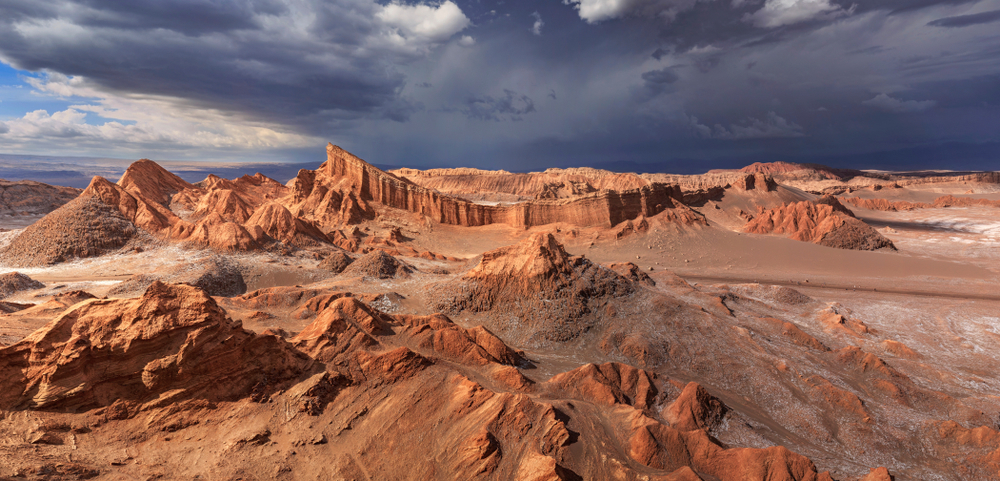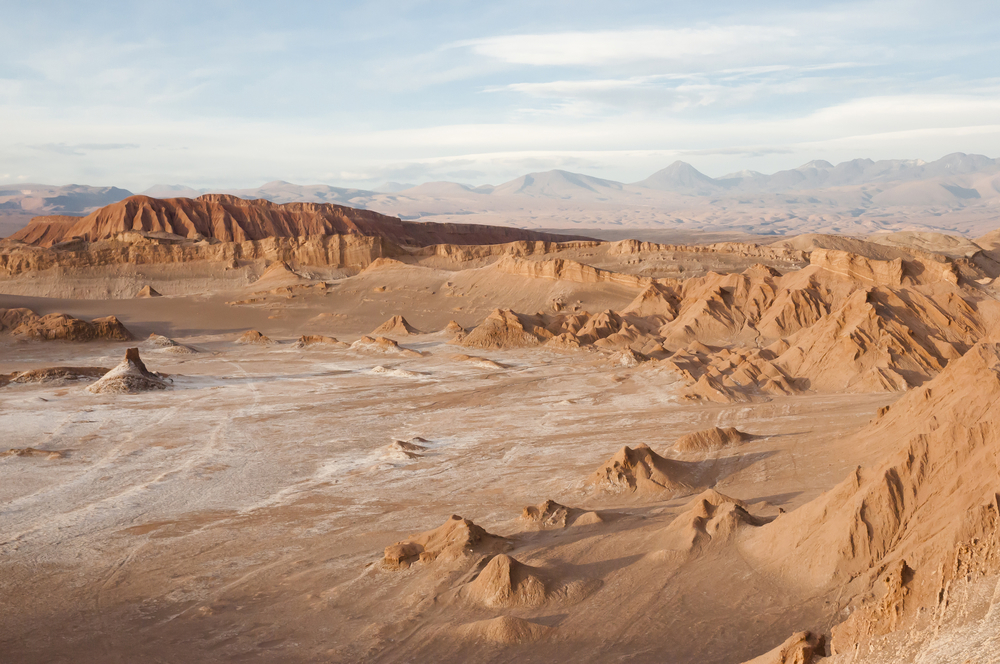Unknown DNA Found in a Part of a Chilean Desert Which Looks Like Mars

Is there life on Mars? We don’t know the answer to that question yet, but we’re getting closer as more rovers and landers are sent to the Red Planet’s surface and human missions are planned. In order to prepare for these and future missions, NASA and other space agencies needed a place that was dry enough, rugged enough and dusty enough to resemble the Martian surface. They found that the most Martian place on Earth is in Chile – the closest place on Earth is the Atacama Desert west of the Andes Mountains in Chile. It is the driest desert on our planet and the only hot true desert to receive less precipitation than the polar deserts. While we don’t know yet about life on Mars, we suspect it could survive there because life appears in some parts of the Atacama Desert – over 500 species of vegetation, some reptiles, a few rodents, penguins, insects and a few others. And now there is one that scientists cannot identify – a “dark microbiome” whose DNA comes from organisms “unknown to science.” Could this be the life we should be looking for on Mars?
“Results from Mars so far suggest that organics are not prevalent on its surface, but here we hypothesize that current instrument limitations and the nature of organics in Martian rocks may also hinder our ability to find evidences of life on the red planet.”
The research is led by Alberto G. Fairén, a visiting scientist in the Department of Astronomy in the College of Arts and Sciences at Cornell University and the senior author of “Dark microbiome and extremely low organics in Atacama fossil delta unveil Mars life detection limits,” published recently in Nature Communications. Fairén and a multi-institution team are testing some old and some new equipment for future Mars missions to determine if the tools are sensitive enough to detect organic compounds that may be quite different from those on Earth. These tests were conducted at the most ‘Mars on Earth’ spot in the Atacama Desert – the Red Stone Jurassic fossil delta, a 100 million-year-old riverbed which resembles Mars’ Jezero Crater and its ancient river delta where the Perseverance rover is roving and the Ingenuity helicopter is flying. The Red Stone delta is 100 million years old, while the Jezero Crater and its delta were not the site of a lake and a river since more than 3 billion years ago, but it’s the best we have for comparison. Like Jezero, it has sandstone, clay and hematite – the iron oxide that makes Mars red. The researchers expected to find more similarities between Jezero and Red Stone. What they found instead was unexpected.

“For this work, the researchers conducted geological tests at Red Stone using four instruments that are currently or will soon be on Mars. They found that Red Stone samples display numerous microorganisms of undetermined classification – what the researchers term “dark microbiome” – and a mix of biosignatures from current and ancient microorganisms that can be barely detected with state-of-the-art laboratory equipment.”
According to the Cornell press release, “Dark microbiome” is a catch-all term researchers use for genetic fragments from organisms “unknown to science. What Fairén and the other scientists found was that nine percent of the genetic fragments analyzed were from dark microbiome and so unusual that they could not compare them to any other known organisms.
“In almost half of the cases, the databases could not clearly say what we had in our hands.”
Microbiologist at the Center of Astrobiology in Madrid and lead author and lead researcher Armando Azua-Bustos speculated that this dark microbiome was from long extinct life forms that have never been found before anywhere on Earth. If they are from ancient Earth, could they also be from ancient Mars? No one can say because no one knows what they are. That’s the problem – the samples are dark microbiome mixed with biosignatures from current and ancient microorganisms that the team barely detected with the most advanced technology on Earth or Mars. Azua-Bustos fears the worst – false positives that would trigger announcements that life has been found, or false negatives which means the Mars instruments missed discovering life because they didn’t recognize the biosignature. What now?
“You need to decide whether is more advantageous having limited capability for analysis on the surface of Mars to interrogate a wide variety of samples, or having limited samples to be analyzed with the wide variety of state-of-the-art instrumentation on Earth.”

One alternative is to leave the best technology on Earth and just send scoopers and rockets to Mars to bring back samples to analyze. Neither of these is cheap, easy or fast … as we have seen. And bringing samples back to Earth leaves the planet and humanity open to exposure to unknown viruses, bacteria or a Martian dark microbiome. NASA is working with the European Space Agency and others to build a lab for the Martian geological samples gathered by the Perseverance rover, but that probably won’t happen in this decade. That’s frustrating, but it gives the engineers more time to develop instruments that can dig deeper into the Martian soil for older samples. Fairén thinks this is the best approach.
“If biosignatures are better preserved at depth, which we expect, there will be more abundance and diversity, and better preservation of biosignatures, in those deep samples. Our instruments in the rover will therefore have more chances to detect them.”
Azua-Bustos says that “We know there are things to detect,” so this means more trips back to the Red Stone in the Atacama Desert with new instruments. This research points out the obvious – all of this talk about sending humans to Mars in the near future is fanciful at best. We can barely get a little mechanical scooper up there to dig up some samples and put them on a return space Uber to a super-secure lab on Earth. It is good to dream but it is better to be realistic and practical – that’s what the space budgets are based on.




